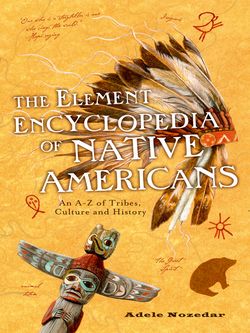Читать книгу The Element Encyclopedia of Native Americans: An A to Z of Tribes, Culture, and History - Adele Nozedar - Страница 30
ARAWAK
ОглавлениеAlso called the Taino, the Arawak people did not live on the mainland of North America, but on the Caribbean islands to the south—specifically, the chain of islands which came to be known as the West Indies/Antilles. As most people know, the islands are called the West Indies because Christopher Columbus stumbled across them while seeking a passage to India, thought that the Antilles were the East Indies, and called the Native Americans that he encountered there “Indians.” This name stuck (although for many it is a continual source of annoyance).
Although Viking explorers reached America long before Columbus, it was Columbus’ “discovery” that really brought the continent to the attention of Europe and, consequently, to the rest of the world. And it was the Arawak with whom Columbus had the most contact.
A farming people, the Arawak had traveled to the Caribbean from South America, and called themselves the Taino, meaning “good people.” Able to grow a varied number of plants because of the tropical climate, the tribe supplemented these crops of corn, potatoes, cassava, peanuts, peppers, and tobacco with hunting (mainly small game, specifically an animal called the Hutia) and fishing (from dugouts; they speared fish and also caught sea turtles). The tribe built seaworthy dugout canoes which could take 100 people; these were used to carry goods to and fro between the Arawak and the Native peoples in South America.
The position of chief, or cacique, of each village, was a hereditary title; this could be a man or woman. Female chiefs were called cacicas. The chief lived in a square or rectangular house with a pitched roof; the villagers lived in circular huts and slept in hammocks, a Native American invention which has proved popular all over the world. These Arawak hammocks were the first that any European would have seen.
Because of the climate, little was needed in the way of clothing, and when Columbus encountered the Arawak he would have seen many naked natives. Both men and women wore beautiful jewelry made from natural materials that were ready to hand, such as shells or bone. The Arawak provided the first contact for many things as well as the hammock, which was rapidly copied as a way of sleeping on board ship. The amiable Arawak showed their visitors potatoes, corn, and, of course, tobacco; in fact, the Arawak word for “cigar” was tabaco.
The Arawak showed Columbus and his men nothing but kindness; this was not repaid. Columbus forced several members of the tribe to accompany him as slaves, and other potential colonists followed suit by treating the Arawak like slaves. The Arawak killed the Europeans, but when Columbus returned he tried to make the Arawak work for him in finding gold. This proved unsuccessful, but taking Natives to sell as slaves proved profitable.
The Arawak were among the first to suffer from the diseases brought by the Europeans, as well as dying of starvation when they were forced into slavery. Others killed themselves, unable to bear such subjugation.
